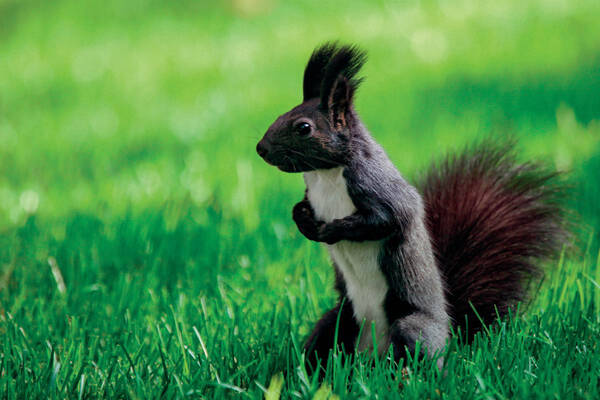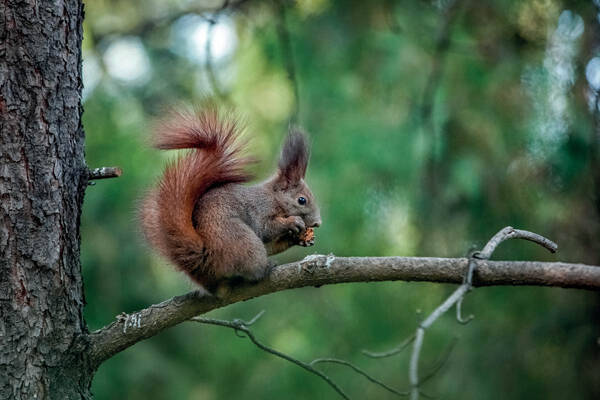Sciurus vulgaris
IUCN
LCBasic Information
Scientific classification
- name:Sciurus vulgaris
- Scientific Name:Sciurus vulgaris,Squirrel, Tree Rat
- Outline:Rodents
- Family:rodents squirrel sciurus
Vital signs
- length:About 20-22 cm
- Weight:About 280-350g
- lifetime:5~10years
Feature
Their fur colors vary depending on the season and location.
Distribution and Habitat
In China, it is distributed in the three northeastern provinces, Inner Mongolia, Hebei, Henan, Shaanxi, Shanxi and Xinjiang. Abroad, it is distributed in Japan, the Korean Peninsula, Mongolia, and through Russia to Europe.
Only one species of the genus Sciurus is distributed in my country, but the geographical variation of the species is large. It mainly lives in temperate and subarctic coniferous forests or mixed coniferous and broad-leaved forests, builds nests on large trees, and is good at jumping.
Appearance
A typical arboreal squirrel, medium in size. The tail is long and fluffy, about 2/3 of the body length. The tufts at the ends of the ears are prominent, especially in winter, but sparse or absent in summer. Individual coat color varies greatly in different seasons. It is generally gray in winter and darker in summer. The back is generally black, dark brown or reddish brown. The central part of the abdomen extends from the throat, neck, chest, abdomen to the groin and the inside of the limbs. All are pure white. The coat is soft and velvety in winter, and short and thick in summer.
Details
Northern squirrels mainly live in temperate and subarctic coniferous forests or mixed coniferous and broad-leaved forests. They build nests in large trees and are good at jumping. They mainly feed on seeds of trees such as pine trees, and also eat mushrooms, young shoots, wild fruits and insects. They are a common group in northern forests.

Contrary to most people's impressions, squirrels that live in trees, have big furry tails, and chew pine cones are actually just a small branch of the Sciuridae species. From snow-capped mountains over 6,000 meters above sea level to tropical islands in the Pacific Ocean, from the Western Hemisphere to the Eastern Hemisphere, except for areas near the poles or the driest deserts with extremely harsh climates and extremely simple or even no vegetation, species of the Sciuridae family are active in various terrestrial habitats, and some of them play an extremely important role in the ecosystem.
Squirrels spend 70% to 80% of their time foraging, and tend to forage and store food in coniferous forests. In autumn, squirrels store nuts on the ground and fungi on branches. Autumn storage is beneficial for squirrels to overwinter and reproduce in the second year. The selection of microhabitats for squirrels to store food and the mechanism of food retrieval have been studied in depth, becoming a hot topic in the current domestic squirrel ecology research.
Squirrels do not have obvious migration, but they have short-distance dispersal behavior, including dispersal from wintering grounds and dispersal from birthplaces. Local competition determines the dispersal distance of population squirrels. Studies have shown that there are differences in dispersal seasons between different sexes. Most male individuals disperse in spring, while females usually disperse in autumn. The dispersal of female individuals is affected by food, while the dispersal of males depends on the distribution of females.









